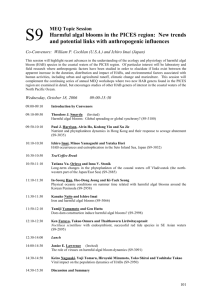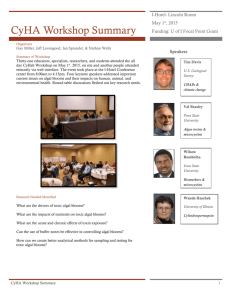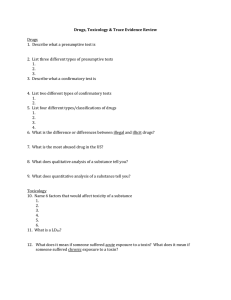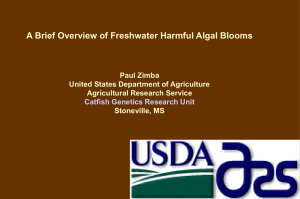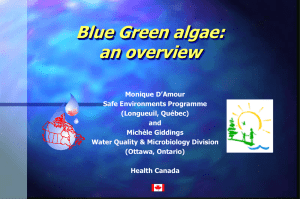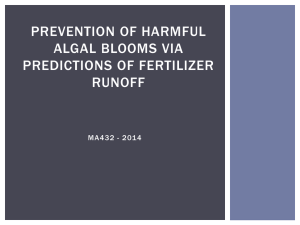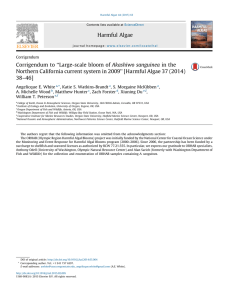Alexandrium fundyense CYST DYNAMICS IN THE GULF OF MAINE
advertisement
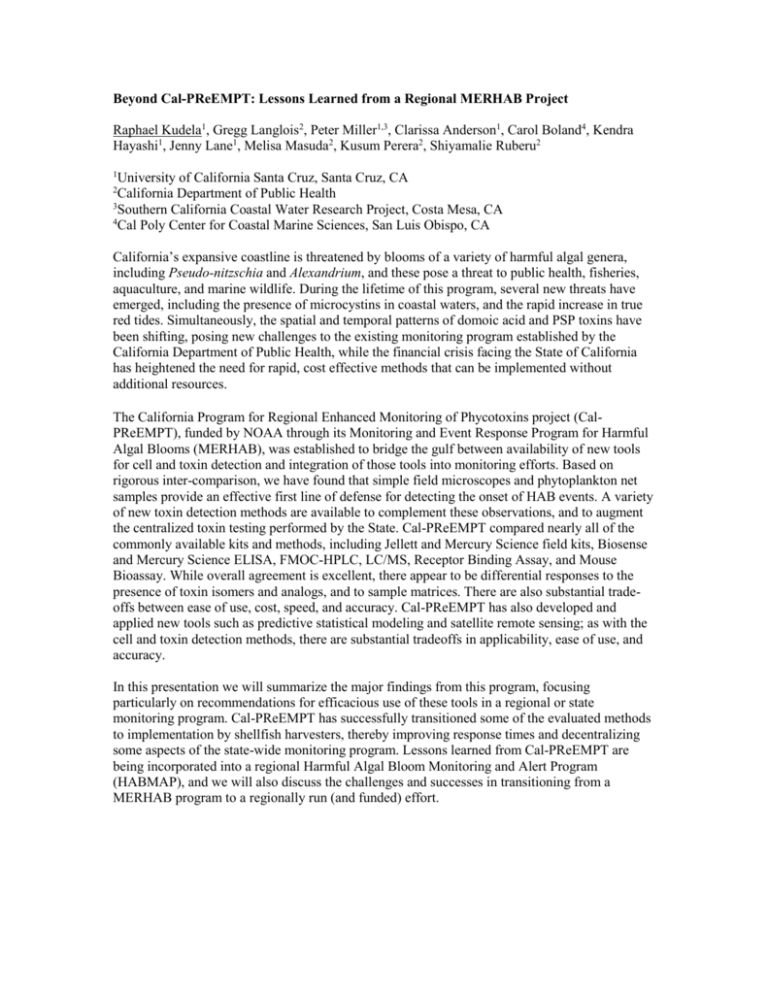
Beyond Cal-PReEMPT: Lessons Learned from a Regional MERHAB Project Raphael Kudela1, Gregg Langlois2, Peter Miller1,3, Clarissa Anderson1, Carol Boland4, Kendra Hayashi1, Jenny Lane1, Melisa Masuda2, Kusum Perera2, Shiyamalie Ruberu2 1 University of California Santa Cruz, Santa Cruz, CA California Department of Public Health 3 Southern California Coastal Water Research Project, Costa Mesa, CA 4 Cal Poly Center for Coastal Marine Sciences, San Luis Obispo, CA 2 California’s expansive coastline is threatened by blooms of a variety of harmful algal genera, including Pseudo-nitzschia and Alexandrium, and these pose a threat to public health, fisheries, aquaculture, and marine wildlife. During the lifetime of this program, several new threats have emerged, including the presence of microcystins in coastal waters, and the rapid increase in true red tides. Simultaneously, the spatial and temporal patterns of domoic acid and PSP toxins have been shifting, posing new challenges to the existing monitoring program established by the California Department of Public Health, while the financial crisis facing the State of California has heightened the need for rapid, cost effective methods that can be implemented without additional resources. The California Program for Regional Enhanced Monitoring of Phycotoxins project (CalPReEMPT), funded by NOAA through its Monitoring and Event Response Program for Harmful Algal Blooms (MERHAB), was established to bridge the gulf between availability of new tools for cell and toxin detection and integration of those tools into monitoring efforts. Based on rigorous inter-comparison, we have found that simple field microscopes and phytoplankton net samples provide an effective first line of defense for detecting the onset of HAB events. A variety of new toxin detection methods are available to complement these observations, and to augment the centralized toxin testing performed by the State. Cal-PReEMPT compared nearly all of the commonly available kits and methods, including Jellett and Mercury Science field kits, Biosense and Mercury Science ELISA, FMOC-HPLC, LC/MS, Receptor Binding Assay, and Mouse Bioassay. While overall agreement is excellent, there appear to be differential responses to the presence of toxin isomers and analogs, and to sample matrices. There are also substantial tradeoffs between ease of use, cost, speed, and accuracy. Cal-PReEMPT has also developed and applied new tools such as predictive statistical modeling and satellite remote sensing; as with the cell and toxin detection methods, there are substantial tradeoffs in applicability, ease of use, and accuracy. In this presentation we will summarize the major findings from this program, focusing particularly on recommendations for efficacious use of these tools in a regional or state monitoring program. Cal-PReEMPT has successfully transitioned some of the evaluated methods to implementation by shellfish harvesters, thereby improving response times and decentralizing some aspects of the state-wide monitoring program. Lessons learned from Cal-PReEMPT are being incorporated into a regional Harmful Algal Bloom Monitoring and Alert Program (HABMAP), and we will also discuss the challenges and successes in transitioning from a MERHAB program to a regionally run (and funded) effort.


